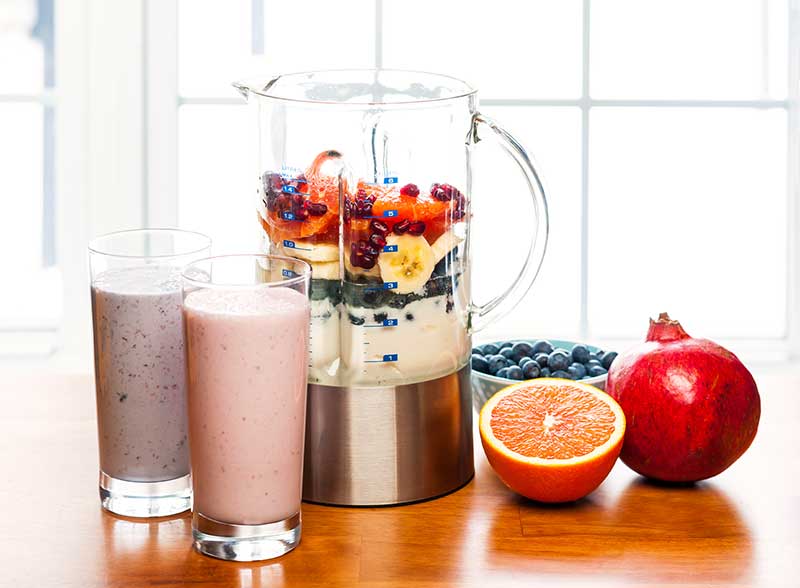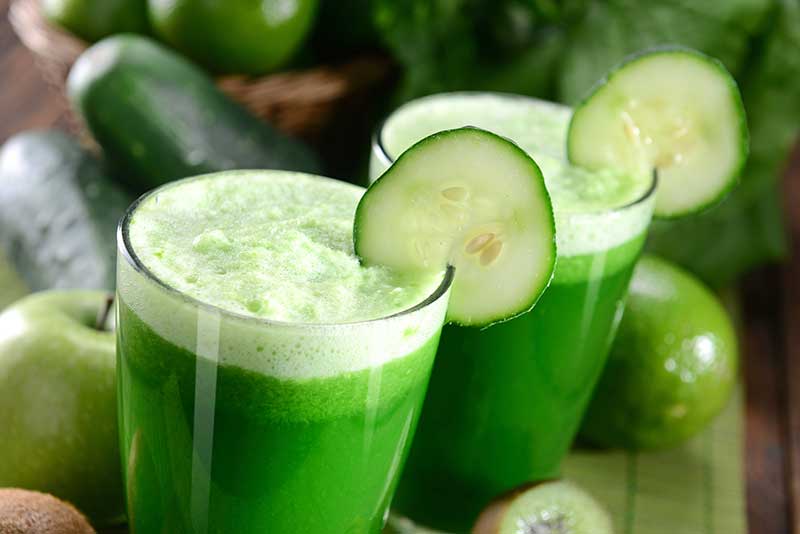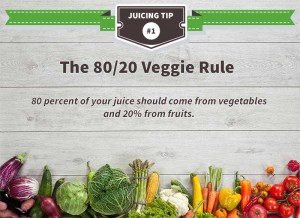Juicing vs Blending
For Better or Worse
Juicers and blenders have been a staple in the juicing world for many years, and everyone swears by their favorite of the two. Which is rather pointless, because when it comes to juicing vs blending, the grass is pretty green on either side.
The main difference between juicers and blenders is the presence of fiber in blended recipes, while both centrifugal and masticating juicers, do their best to crush and cut out the fiber from juice. As there are no fibers to digest in juices made from dedicated juicing machines, the body assimilates their nutrients, oxidants, vitamins and sugar content (which is essentially doubled) extremely fast.
While fruits and vegetables that undergo blending, maintain a lower level of sugar content, and they also digest more slowly and effectively, making a person feel fuller (due to the fiber). So, while juicing is shot directly into the body; blending is essentially provides a pulped meal that’s easy to swallow. Either way, the nutritional content with both is pretty high.
It’s All about Fiber Baby
Fiber is highly beneficial to the body, and necessary, so it’s ultimately better to have a juicer and a blender. Blenders and juicers share a lot of the same benefits in terms of health and efficacy:
Having a blender around helps with making smoothies, pulpier berry juices and keeping up a healthy intake of fiber alongside a host of other awesome nutritional stuff.
Of course, when it comes to juicing vs blending, for the sake of pure juice, nothing really beats a dedicated juicer. As blending suffers from both oxidization and reduced yield due to the sharp blades cutting into produce and creating heat at the same time. Essentially, the blender is a less efficient centrifugal juicer which outputs more fiber.
Despite our recommendation of using a juicer and blender for the juicing optimal experience, we realize having both at once may not be an option initially. So let’s take a look at the pros of juicing vs blending, to help decide which one is more important to have right off the bat.
Juicing vs Blending

Blending
1. Meals in a Glass
As we’ve mentioned previously, fiber is the single biggest advantage blending has over juicers, as it not only curbs the appetite, but also insures that the body gets the “whole package,” as nature intended. Fiber is extremely important to the digestive system and detoxing.
2. Cheaper
Good quality centrifugal and masticating juicers can be bought without breaking the bank, but as a rule of thumb, blenders always tend to be cheaper than both. That’s not to say that blenders are for the thrifty, as specialized health blenders and certain models can cost a pretty penny for those who need the usability.
3. Cleanliness
Blenders naturally have fewer, and easier to clean parts compared to juicers, which can be a bit tricky to get the hang of cleaning at first.
Adding ice, ice cream, proteins and various other supplements are also best left to a blender, as juicers are purely designed to just juice (masticating ones in particular).

Juicing
1. Nutritional Value
Of course, absolutely nothing is going to beat a juicer when it comes to extracting the most vitamins, antioxidants, minerals and everything else out of a fruit or vegetable. Blenders essentially turn things into liquid mush, juicers separate the liquid and the mush (known as pulp).
So if you’re looking for the best possible nutritional squeeze, a juicer is indispensable.
2. Better Yield
More juice from less produce is an advantage of juicing that many people overlook. So when it comes to pure juicing, without any fiber, juicing definitely has more bang for buck than blending.
3. Everything Gets Juiced
Juicers will juice absolutely any produce to the best of their abilities, this is especially true of cold press and masticating ones; particularly when dealing with vegetables like bitter gourd, spinach, kale and let’s not forget — wheatgrass.
A blender will not only produce abysmal yield when dealing with leafy greens, it’ll simply mush them and do nothing else.
4. Longer Warranties
Most blenders come with a standard 12 to 24 month warranty, whereas any good quality juicer is warrantied for at least five years, with others sporting 10-years to lifetime warranties.
5. No Oxidation
When air mixes with fresh juice or produce, they start the process of oxidization. A perfect example of oxidization occurs apples turn black after being cut open and left alone for a few minutes; a similar process occurs when things are blended–due to the effects of naturally present heat and air inside a blender.
Best Practices
First of all, buy the blender that’s best for you personally. Breville has a wide selection of cold press juicers that come highly rated, and don’t cost too much either. The same idea applies to blenders as well– with Vitamix blenders being hailed as one of the better brands for blender based juicing.
Secondly, always take careful stock of where the produce comes from, how wholesome it is and whether it’s organic or not. Pesticide free content is always ideal for juicing, both in terms of health and quality.
Thirdly, sugar content, as we’ve discussed before is an important thing to keep an eye on. Remember that it doubles when fruits and other similarly high sugar content vegetables are juiced.
Two Players, Same Team
In the end, juicing vs blending comes down to personal needs and preferences, and in our experience, both machines go hand-in-hand for an optimal juicing experience. But if you could only have one, a juicer does a better and more wholesome job of making healthy drinks out of almost anything.

